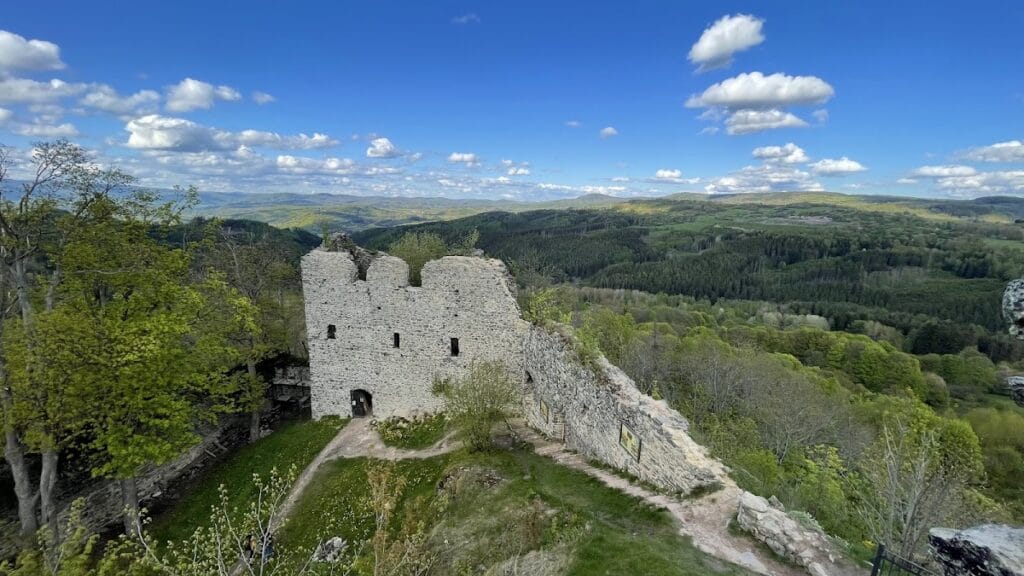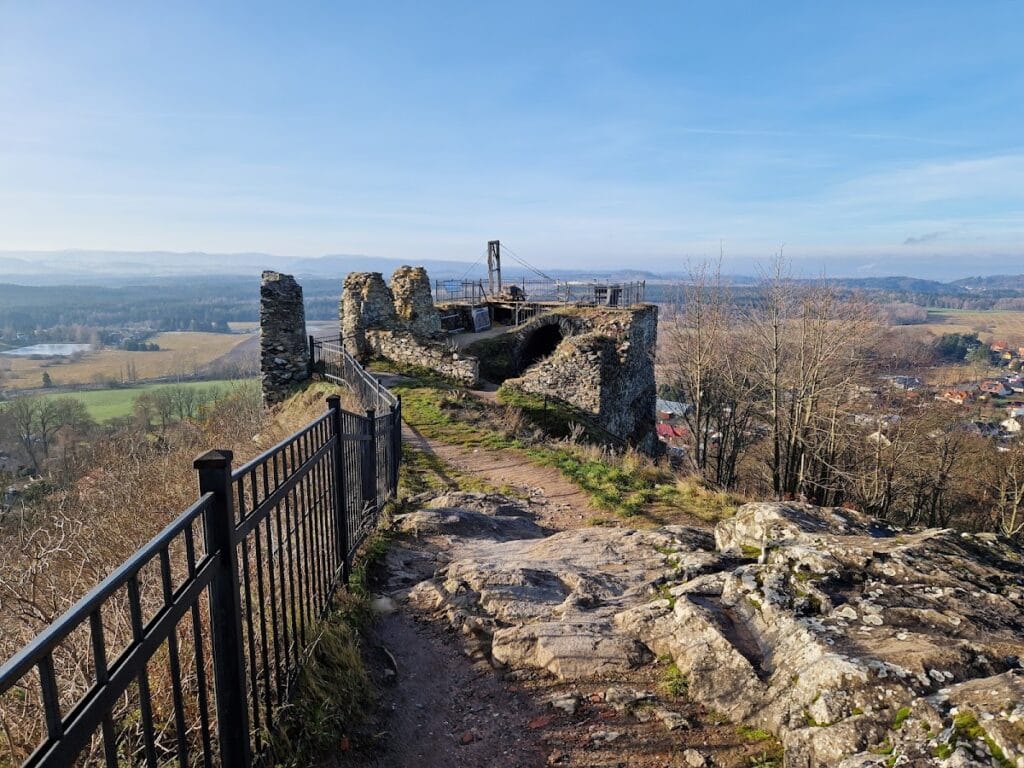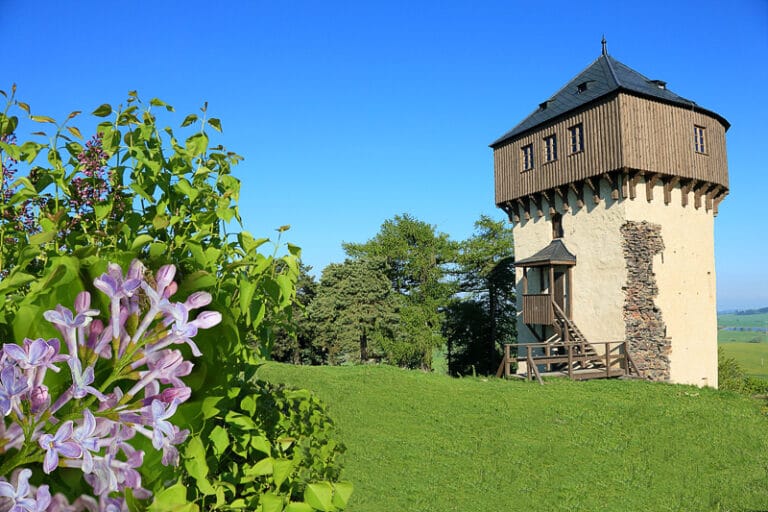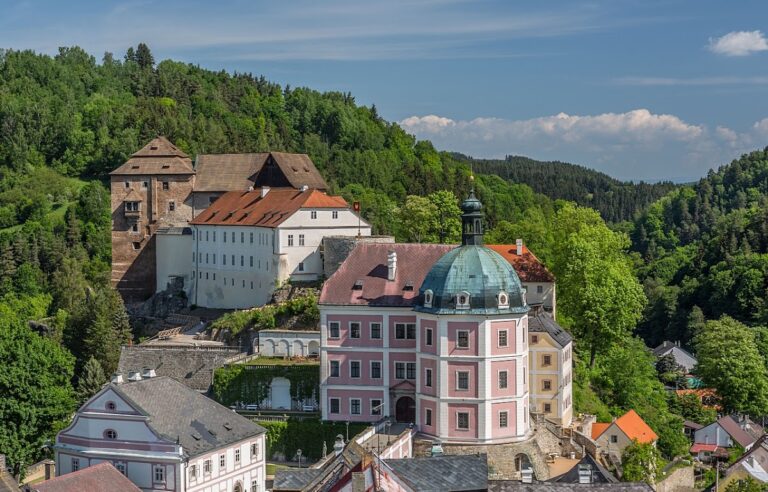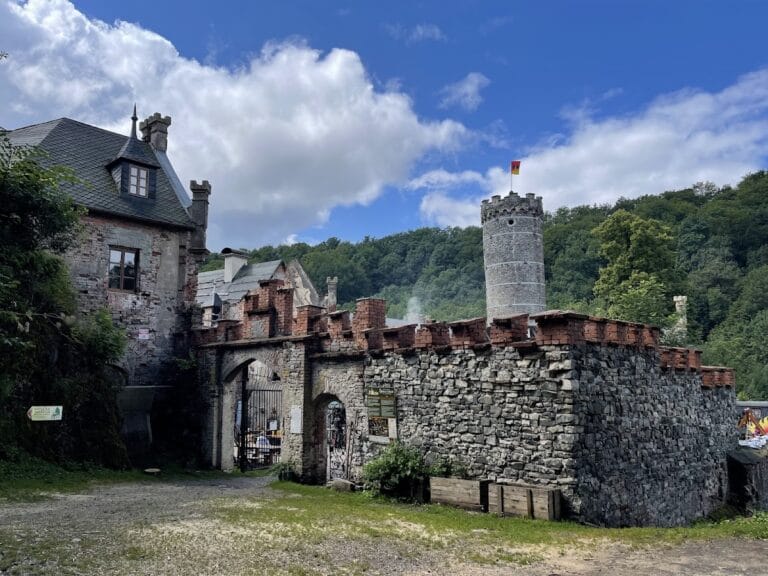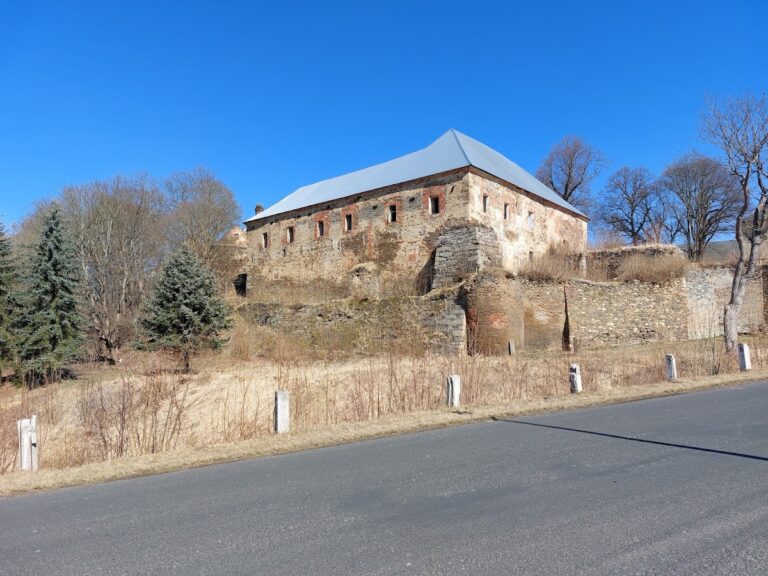Andělská Hora Castle: A Historic Fortress in the Czech Republic
Visitor Information
Google Rating: 4.7
Popularity: Medium
Google Maps: View on Google Maps
Official Website: www.karlovyvary.cz
Country: Czechia
Civilization: Medieval European
Remains: Military
History
Andělská Hora Castle, originally known by its German name Engelsburg, stands near the village of Andělská Hora in the modern Czech Republic. The fortress was established in the late 14th century by the Lords of Riesenburg, who also managed the nearby Petschau estate. Its strategic position atop a basalt hill allowed it to oversee the surrounding area southeast of Karlovy Vary.
The first written mention of Andělská Hora dates back to 1402, when Boreš of Rýzmburk held ownership. Four years later, the castle transferred to Oldřich Zajíc of Házmburk, but following his death around 1414, the fortress returned to the hands of the Bohemian royal chamber. This period set the stage for the castle’s evolving role in regional power struggles.
In 1430, during the turbulent Hussite Wars, the fortress was seized by Jakoubek of Vřesovice, a Hussite captain who utilized it as a base for conducting raids across neighboring territories. Several years later, in 1437, Emperor Sigismund granted the Loket region—including Andělská Hora—to Chancellor Kašpar Šlik, who undertook restoration efforts to strengthen the castle’s defenses and facilities.
Throughout the 15th century, the castle experienced frequent changes of ownership resulting from political conflicts. The Plauen family took control in 1466, but the fortress returned to royal authority by 1469. By 1496, the castle had become the administrative center of the Plauen family’s estate in the region, marking its emergence as a noble seat.
A notable phase of architectural transformation occurred in the mid-16th century, when extensive Gothic reconstruction was carried out along with an expansion that introduced a Renaissance two-story palace featuring vaulted ceilings. This redesign adhered to the natural pentagonal shape of the terrain, blending the structure with the basalt hill’s contours.
Ownership of the castle passed through several prominent noble families over the centuries. The Lobkowicz family held it briefly from 1565, succeeded by the Fictum family in 1567 and later the Colonna of Fels. Following the Battle of White Mountain in 1620—a decisive event in Bohemian history—the castle was confiscated in 1622 and awarded to Heřman Černín of Chudenice. During the devastating Thirty Years’ War, Swedish forces occupied and plundered the fortress in 1635.
The decline of Andělská Hora Castle began after a significant fire in 1718, which rendered the buildings unsuitable for habitation. Subsequently, the castle was abandoned and slowly fell into ruin. It remained in the possession of various families until 1945, when the estate was confiscated from the Černín family by state authorities. Today, the ruins are owned by the local municipality, although legal claims by the Černín descendants remain unresolved.
The site also holds a place in cultural history. The castle served as a filming location for the movie “Balada pro banditu,” and the famed writer Johann Wolfgang von Goethe once celebrated his 37th birthday here, reflecting its enduring legacy beyond the military realm. Since 1964, the remains have been safeguarded as a cultural monument, with local authorities exploring options for conservation and restoration.
Remains
Andělská Hora Castle occupies a rocky basalt ridge shaped into a roughly pentagonal layout that influenced its design. Its construction reflects adaptations to the rugged terrain, combining stone fortifications with wooden elements where necessary.
The oldest surviving structure is a square residential tower positioned at the highest point of the rock formation. This tower, built in the late 14th century, formed the original core of the castle and was constructed in solid stone. It once stood above a now-lost building that was replaced during the Renaissance expansion by a two-story palace with vaulted ceilings.
Surrounding the central courtyard, thick stone walls provided defense and enclosed the castle’s core. Below the tower, these walls were once strengthened by a semicircular bastion, a rounded fortified projection designed to better repel attackers; this bastion has completely vanished over time. The walls extended to a raised platform located above the first gate, where another vaulted hall was constructed, serving both defensive and possibly administrative functions.
Access to the castle was guarded by a complex system of fortifications developed in two stages. The outer defense featured a front wall pierced with numerous narrow openings called loopholes—small slits through which defenders could shoot arrows or firearms—accompanied by sockets designed to hold hooked crossbows, a medieval weapon for launching bolts. This wall was reinforced by a polygonal bastion, an angular projecting element providing overlapping fields of fire. Between the castle’s first and second gates ran a path partially shielded by a wooden wall, providing additional protection for those approaching the stronghold.
During the mid-17th century, modifications were made under Emperor Ferdinand III’s orders to reduce the fortress’s defensive strength. This included the reshaping of surviving gate openings, reflecting political aims to limit potential military use of such castles during times of centralized control.
The Renaissance palace introduced in the 16th century rose two stories and featured vaulted ceilings on its upper floor. Its pentagonal floor plan was unusual, crafted to follow the shape of the underlying basalt hill. These vaulted ceilings showcased architectural techniques that created arched stone or brick ceilings, which provided strength and allowed for more spacious interiors.
Some sections of the castle’s fortifications incorporated wooden elements alongside stone, making use of the uneven terrain to supplement defensive works. The combination of materials and the irregular layout illustrate the ways builders adjusted construction to the natural landscape to maximize the fortress’s effectiveness.
Today, the remains stand as a ruin with varying degrees of preservation. Key structural components like the semicircular bastion and some curtain walls no longer exist, but the tower, sections of the palace, and portions of the wall with their characteristic openings still convey the castle’s historical form and defensive sophistication. The ruins serve as a testament to the layered history experienced by Andělská Hora Castle over centuries of occupation, conflict, and decay.

